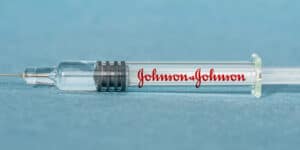
It sounds harmless enough. Most of us don’t think twice about talcum powder. We associate its use with babies and cleanliness, and as an everyday household product that eases a rash and feels good on the skin. However, scientific studies dating back to the 1970s have shown that use of talcum powder on female genitals leads to an increased risk of ovarian cancer.
Recent legal cases have come to light showing that some talcum powder is contaminated with asbestos. Asbestos is very dangerous and also causes cancer.
WHY IS TALCUM POWDER DANGEROUS?
Talcum powder gets its name from containing an ingredient known as talc, a mineral that is assigned the lowest level of scratch hardness by the scientific community. This means that if you were holding a hunk of talc, you could easily scratch into it with your fingernail—thus, it can be efficiently transformed into a powder.
In various studies over the past few decades, talc has been associated with lung and ovarian cancer as well as pulmonary issues. The reasons for these associations are not made clear to the public; however, the dangers have become increasingly well-known.
Another contributing factor to the danger of talc (and talcum powder) it that it is often times located and mined in underground deposits that also contain asbestos ore. This fact sets off a red light. Although the mining industry and related governments claim there is a strict separation of cosmetic talc from industrial grade talc, thus eliminating the possibility of contamination, any prudent person would be suspect about this.
According to the National Center for Health Research (NCHR), 20,000 women developed ovarian cancer in 2017, and 14,000 women died from the disease. About one of 75 women, or 1.3% of all women, will get ovarian cancer; however, the NCHR reports that women who use talcum powder have a 30% higher likelihood of contracting ovarian cancer than women who don’t use the product. Statistically speaking, out of every one million women, 4,000 more will die who use talcum powder than those who don’t.
For a free legal consultation with a Personal Injury Lawyer
TALCUM POWDER LAWSUITS
Over 6,500 lawsuits have been filed against Johnson & Johnson, the main manufacturer of talcum powder. To date, a handful of lawsuits filed by plaintiffs with ovarian cancer or their families have succeeded, resulting in awards of millions of dollars for damages, including death.
Most recently, in 2017, a plaintiff with ovarian cancer was awarded $417 million by a Los Angeles jury.
However, two months later the judge dismissed the verdict on the grounds that, due to ongoing scientific debate regarding the association between talc and ovarian cancer, Johnson & Johnson could not be held liable for the plaintiff’s damages. In other words, the judge ruled there was not sufficient proof that the talcum powder caused the cancer.
In 2018, a St. Louis court awarded nearly 5 billion in both punitive and compensatory damages to 22 women who claimed to have developed ovarian cancer due to long-term use of talcum powder. Contributing to its ruling, the court found that Johnson & Johnson had known for over four decades that there was asbestos in their product, but suppressed the evidence.
Also, both talc particles and asbestos fibers were discovered in the ovarian tissues of the plaintiffs. Rulings both for and against plaintiffs’ claims show that no court case is easy for the plaintiff. It takes a solid case and a competent attorney, along with a reasonable judge, to win the case. Most of the large sum rulings were based on cases in which the women had used Johnson & Johnson talcum powder for many years, and subsequently developed ovarian cancer.
NEGLIGENCE & LIABILITY IN TALCUM POWDER PERSONAL INJURY CASES
The key factor in winning a personal injury case is demonstrating that the defendant exhibited negligence, which led to the plaintiff’s injuries. Negligence is defined as a failure to exercise reasonable care to ensure another person’s safety. The issue here pertains to whether or not Johnson & Johnson failed to demonstrate reasonable care in providing a consumer product that, according to some studies, inherently causes cancer and has been proven to contain asbestos.
Upon proving that a defendant is guilty of negligence, the issue of their liability (responsibility) for the damages suffered by the plaintiff is forthcoming. That is to say, when a defendant is found to have been negligent, they will also likely be found to be liable for the damages suffered by the plaintiff (you). In most cases, a court will order an award to the plaintiff representing a compensatory financial sum for the plaintiff’s injuries.
We Are committed to winning and winning big for our clients





